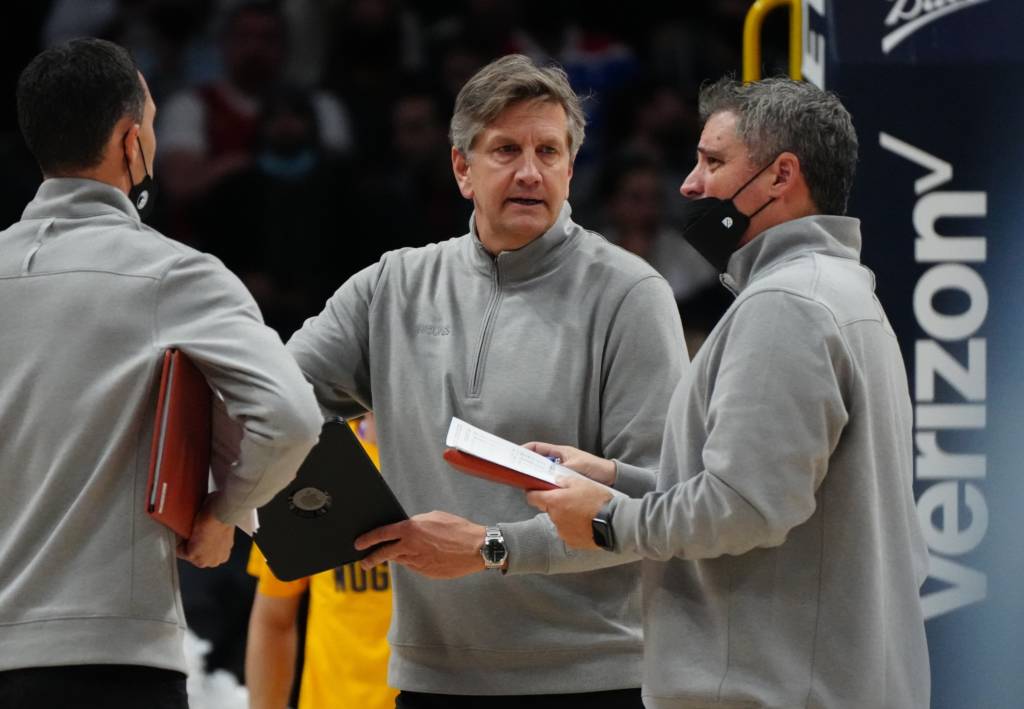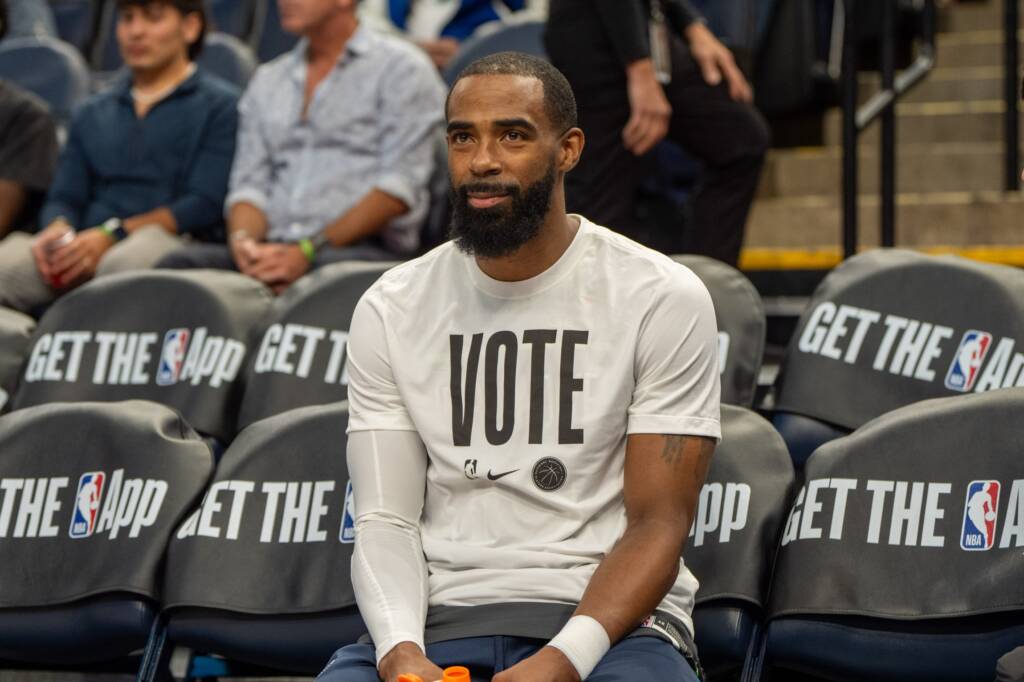It’s been 299 days since the Minnesota Timberwolves named Chris Finch as its new head coach. The decision was met with skepticism around the league. Many fans, analysts, and even players derided the coaching decision.
Wolves assistant David Vanterpool was considered a head coaching candidate at the time. He has received endorsements from many of his ex-players, including superstar Damian Lillard, who took to Twitter to weigh in on the hire:
Finch was met with hostility not even 24 hours into his first NBA head coaching gig because of how he was hired. It was not without reason, though. It’s uncommon to hire a coach off of somebody else’s staff while you’re on the road. The Wolves had just played a game, and they fired Ryan Saunders only a few hours after the conclusion.
Finch was hired on the same night. He was no ringer, though. Not only did Finch have strong ties with at the time president of basketball operations Gersson Rosas, who he had coached with at the start of his career. Finch was also highly regarded as a bright offensive mind who had led successful offensive turnarounds in many of his previous assistant jobs.
The two most improved teams he coached were the Denver Nuggets and the New Orleans Pelicans, and there’s one significant similarity those rosters share with the Timberwolves. They both had an elite big man: Nikola Jokic in Denver and DeMarcus Cousins in New Orleans.
We’re ten months removed from the hire. The Wolves have a Big 3, an elite big man, and an offensive-minded coach. So the Wolves have to have a top-15 offensive team, right?
Well, about that.
The Wolves currently have the 24th-ranked offense in the league based on offensive rating per game. They score the 14th most points per game in the league while only shooting 42.5% from the field, good for 27th in the league.
The Timberwolves offense has been less than optimal this year. Some of the blame has to fall on Finch. Whenever something is not working, a coach has to make adjustments. But Finch can’t make the ball go in the basket.
The bottom line is the players need to hit their shots. If they can’t put the ball in the hoop at a higher clip, then nothing Finch does can help. When the Wolves average top-five wide open (the closest defender is six-plus feet away) field goal attempts per game and shoot at a bottom-10 efficiency on those shots, the problem isn’t on Finch. It’s on the players.
So what can Finch do?
Finch can look to increase actions that are working and decrease actions that aren’t to maximize his players’ offensive potential.
What’s Working?
So far this season, the Wolves’ offense has been centered around the 3-point shot. But the offense can sour quickly when those shots aren‘t falling. It’s important to trust other aspects of the game when the 3-ball isn’t falling. Finch has to look for certain plays and actions to score. For example, Minnesota scores the fifth-most points in the league on shots that come off a screen, like this one:
Another efficient piece of the offense has been the dribble-handoff (DHO) actions. This action does lean a little bit more into the Wolves’ desire for 3-point shot attempts, but 2-point shot attempts aren’t uncommon. This approach could be why the Wolves, who have a 53% effective field goal percentage (EFG%), have made the DHO one of their most efficient sets.
When the team is struggling from behind the arc, they can move away from DHO sets designed to create a 3-point shot and move to sets that set up mid-range shots. Anthony Edwards, in particular, has been highly prolific in the DHO, shooting 58.9 EFG%. Plays like this one between Karl-Anthony Towns and Ant have been productive this season:
What’s Not?
This year, the Wolves offense has seen some unique issues, from the missed layup problem to only having two players shooting over league-average 3-point percentage. But those are things Finch can’t control. So what can he fix? Well, a coach can affect a play’s result most effectively out of a timeout. The Timberwolves are ranked 26th in the league in points per possession out of a timeout (ATO). After timeout plays are where Finch can affect the game the most, and he’s not getting the looks he needs to run his offense efficiently.
Another solution could come from looking back on the ways Finch was successful in his earlier days, specifically his work with Jokic and Cousins. In those offenses, both centers had a high usage rate. Cousins and Jokic led their respective teams in usage when Finch was in New Orleans and Denver, respectively. This season, Finch has shown a little variation, though. KAT’s usage rate sits behind both Edwards and D’Angelo Russell. In a year in which the Wolves offense has been slightly less effective than predicted, it would be interesting to see Finch go back to his older methods and let Towns control the offense again.
For a team that is supposed to have a much more talented roster than they’ve had in the recent past, an offensive rating lower is almost unacceptable, especially after hiring an offensive-minded coach like Finch. The Wolves need to get better as the season goes along. Finch has to look at certain sets and his previous coaching experiences to carry the offense for this to happen.

